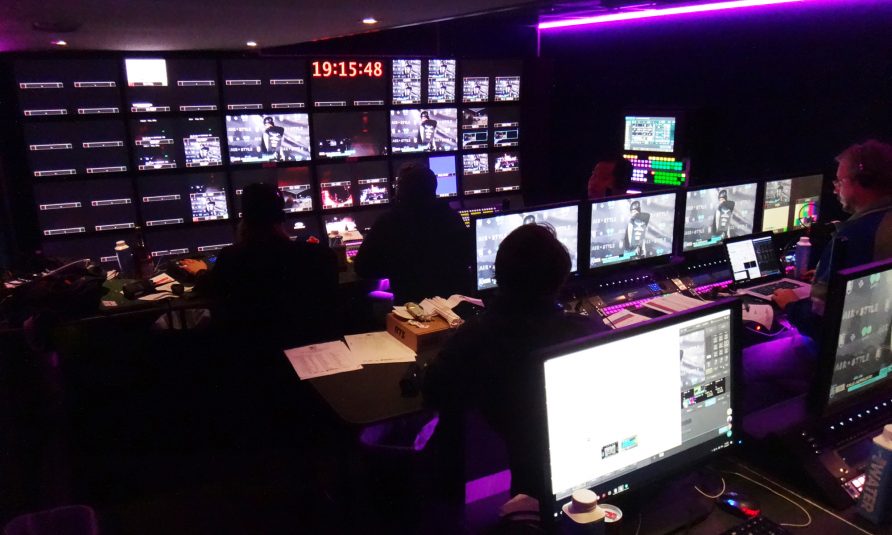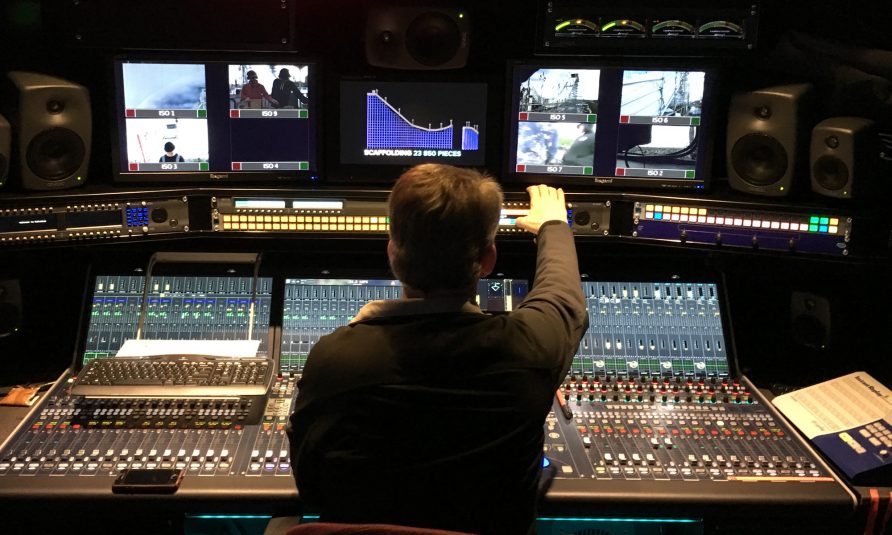Gearhouse Broadcast’s 4K ‘Supertruck’ Columbus Hits U.S. Market
Unit features virtual management system and second control room for sub cut
Story Highlights
When it comes to 4K/UHD, few mobile-production companies have been more at the forefront with the next format of broadcast technology than Gearhouse Broadcast. The company launched its first 4K truck — HD8 — nearly two years ago in Australia, was one of the first to invest in DYVI switchers from EVS, and has already used Aperi’s native-IP live-production platform. Now the company is moving forward with its second dedicated 4K “supertruck”: Columbus designed for the U.S. market.

Gearhouse’s new Columbus is built around a Grass Valley K-Frame production switcher, an Imagine Communications Platinum IP3 28RU router, and four EVS ChannelMAX live-production servers.
Its design is rooted in its forefather, HD8, but it is built specifically for the U.S. sports and entertainment market. According to Marc Genin, managing director, Gearhouse Broadcast USA, the mobile unit splits the production area in two, enabling simultaneous production of a main cut and a sub cut for another program: Spanish-language, visiting-team, live-streaming feed.
He notes that the solutions are in place today to use 4K technology to broadcast higher-resolution images in HD. So broadcasters don’t have to wait until the 4K distribution gets figured out to start working with 4K tools.
“This is what we’re delivering with Columbus,” he points out, “a practical way of creating 4K content that doesn’t require the adoption of lots of new technologies or additional extensive training for production crews.”
Columbus is IP-ready and equipped with 24 Boland 4K displays in the monitor wall of the main control room. They’re driven either as quad splits or as single-input 4K monitors from the main router. The truck features 16 Sony HDC-4300 4K/HD cameras and has the capability to add six RF cameras or four more HDC-4300’s. Hitachi SK-HD1200 camera systems will be deployed for non-4K applications.
“Columbus was developed with the current and emerging needs of the U.S. market in mind,” says Gearhouse Broadcast CEO/founder John Newton, “based on our experience here as well as from what we have learned with advanced mobile units in Australia.”
The 60-ft. behemoth houses a Grass Valley K-Frame production switcher with 96 inputs and 24 outputs. It is built around an Imagine Communications Platinum IP3 28RU router and features four 12-channel EVS ChannelMAX live-production servers.
Audio is supported by a Lawo mc256 (64-fader) audio mixer, with communications managed by the new RTS Adam matrix intercom. Wireless communication is supported via a Clear-Com Eclipse Delta frame running FreeSpeak II, allowing use of a point-to-point four-wire beltpack.
Gearhouse’s goal is to simplify 4K production and make it a more welcoming medium for live-production and operations teams. Though acknowledging that completing the transition will take time, the company sees an opening in the market, with IP workflows appearing to pave a path to more 4K/UHD production in the future.
“We wanted to provide a solution that will show content producers that acquiring and delivering 4K broadcasts is possible with the technology we use now,” says Genin, “just like we’ve done with our supertruck in Australia.”
Gearhouse saw the need to launch a mobile unit in the U.S. simply in response to the sheer scale of live productions that need to be served. The company’s U.S. branch has built a strong reputation for mobile-production support, recently playing a key role in development of broadcast-production facilities used at the USTA Billie Jean King National Tennis Center for the US Open.
Columbus is based in Gearhouse’s Los Angeles facility and has been put to the test for a few live events in the L.A. area. It is now ready to serve the entire North American market. Attendees at NAB 2017 in Las Vegas next month can check Columbus out at Booth OE836 in the outdoor/mobile-media area between Central and South Halls.

